Let’s talk about Wendy Steele who understands the impact of generosity and has been a champion of philanthropy for most of her adult life. In 2001 she launched and led an innovative pass-through foundation called Impact 100 which brings transformational grants to the communities it serves across five focus areas, those areas are culture, education, environment, family and health and wellness. Today, her concept has been replicated in many cities around the globe and continues to expand, in fact I think there are some representatives here today. Beyond Impact 100, Wendy serves as a guide to introduce the power of generosity to organizations and families who are ready for the journey, through her organization, Generosity Matters. Wendy is the winner of the 2014 Jefferson Award for Public Service for her work in philanthropy and she believes wholeheartedly in giving back to her community. Whether giving time, talent, or treasure, Wendy, her husband and their five children are active volunteers. She believes there are two kinds of people in the world, those who see the needs in this world and realize they can be part of the solution and those who need to be invited to the party. [laughter] So, Wendy we’re welcoming your invitation today. [applause] – Thank you, what an exciting day we’re having here together, it is a joy to be here. When Martha started off this morning with a call to action for generosity, I said I have found my people.
[laughter] They’re all here. And that’s really where I spend most of my life is that call to action to generosity. So how did I get that way and what brings me here? In order to really understand that I’m going to give you a little history, I’m going to give you a little current and, and then together we’re going to paint a picture of our future. I was born into a family that was not particularly wealthy, but it was particularly caring. I learned early on that our role here as citizens is to leave the world a little bit better than you found it. And so whether I was babysitting neighbor kids down the street and was told by my parents to be sure I emptied the dishwasher or wiped off the counter or did something to help the parents while the kids were napping or playing, it was just part of my DNA. So naturally as I grew up, my involvement continued. And I was involved in a lot of the traditional ways, I volunteered at my church, I volunteered in my school, I helped my neighbor. We did odd jobs for people who needed them. I trick or treated for UNICEF, I joined the Junior League and later I joined non-profit boards, I gave time, talent and treasure.
And what I’ve learned about those three things is that our best life is when we have time, talent, and treasure to give. But at least in my life and I don’t know about in yours, I find often I have one of those three, possibly two, but it’s rare that I have all three. And so I will tell you that when I speak about generosity and building a culture, I am talking about in all of those ways, because each one is important. The very kind introduction referenced Impact 100 and starting it. I’m going to give you a little bit of background on how I got there. I moved to Cincinnati, Ohio from the East Coast where I had lived for much of my life and when I got there I dove in with both feet. I am, I confess, a recovering banker. And so when I was there I was in the banking business. Part of my interview with any company I have ever worked for, is to make sure that, as an organization, they place a priority on giving back to the community. And so, during my life, I have had times where I’ve worked full time from home, I’ve worked part time, I’ve worked as only and I don’t mean only, as a full time stay at home Mom and all along the way I always allowed time and budget for my community service.
Moving to Cincinnati I was delighted to find this is a wonderful place to raise a family, there are lots of corporate headquarters so there are really well-paying jobs, lots of ways to get involved. But after moving there and meeting some dynamic, amazing women, I realized that I wasn’t seeing enough of them out in the community and so I asked them to come and join me. I consider myself rather a generalist in that I, I care about the entire community. So sometimes you’ll find me helping an arts and culture organization and another time it might be at a hospital or at another time it might be working at a park or a civic garden center. And so as I got engaged in various projects, I would invite these amazing women to join me. And what I heard, at what I felt was an alarming rate were all the reasons why they felt they couldn’t join. They might tell me that they traveled for work and they couldn’t make a regular meeting, or that they were a stay at home Mom and they really couldn’t justify paying a sitter 10 dollars an hour to come and volunteer with me. But what I heard a lot was, is that they didn’t have enough. You know, they didn’t have enough time, they didn’t have enough money to really make a difference, they didn’t know enough, they hadn’t lived here long enough, they hadn’t studied it enough, they were not enough. And over the years this started to bother me until the summer of 2001, I was on vacation in northern Michigan, not far from where I now live, and this dilemma was really troubling.
What was also troubling was the fact that knowing of non-profits who were forever writing grant applications. And when those grant dollars came in it was fantastic, it was like the proverbial manna from heaven, it feeds them for today, but tomorrow you need to be out writing again. And what I heard them say is how they needed more substantial grants, they needed significant funds so they could really execute on their strategic plan. So I got out my spiral notebook and I wrote down all of the objections that I had heard and then one by one I overcame them. And what ended up in that spiral notebook that summer was what has now become the Impact 100 model. And so at Impact 100, the way the model works is we gather at least a hundred women, they each donate a thousand dollars. We pool that money and give it away in its entirety with a minimum grant size of 100,000 dollars. It stays locally, it’s one woman, one vote, 1,000 dollars. It was amazingly well received. Now bear in mind, I did not come into this that summer with my spiral notebook with a pedigree or a strong background in non-profit work.
What I had was years of experience and the desire to empower women and transform the community and it worked. What I knew then and I know even more now is what happens when there is that call to action for generosity. When we invite women in this discussion but people in general to become generous, something sort of magical happens. What we see is that as we give back and the community gets better, you want to do more. In fact we are biologically wired to do more. When you are generous you produce oxytocin. Oxytocin is that hormone that occurs right after the birth of your baby, that after all that pain and nine months of carrying around however much extra weight it was, when that little bundle of joy, you see him or her for the first time, there’s a lot of oxytocin and that’s bonding. Hugging and shaking hands also produces oxytocin. Chemically, our body wants us to do more of producing that hormone. The interesting thing about it is, oxytocin and cortisol cannot co-exist, so the more oxytocin you have, the less cortisol, cortisol is the stress hormone.
So the next time that you’re stressed, do something generous and watch your life change and I mean that. If someone cuts you off in traffic, slow down and give them room. Imagine that they’re off to save their dying mother or collect their puppy from a fire or something. Because when that happens you’re not doing it necessarily for them, you’re doing it for you. So the more stressed you are, the less generous you can be and likewise, the more generous you are the less stressed you will be. So it works in a way like a spiral, like a vortex that builds on each other. Because here’s something else we know about generosity. If you witness an act of generosity, for example, when I was first arriving here someone very kindly went and got me water and asked, you know, is this all you need, would you like some water? Well when that happened, that act of generosity gave her a blast of oxytocin. It also gave me a blast of oxytocin. And if you were to have witnessed it, it would have given it to you.
And what did I tell you about oxytocin? It makes you want to do more. When you see someone being generous, you in turn are compelled to be generous. Do you remember the story at a Starbucks a couple of years ago where in the line someone paid for their own coffee and then they gave an extra however much, five, 10 dollars and they paid for the people behind. And what ended up happening is that car after car when you pulled up, they would say well, guess what? The car in front of you has paid for you, isn’t that fabulous? Oh my gosh, it’s not even my birthday! And so what do you do? You pay for the car behind you. In the case of this particular Starbucks, this went on for 453 cars, OK? 453 cars that day paid for the person behind. So you’re all thinking, well, who was 453? [laughter] Like why and what, what? Here’s what happens. Authentic generosity is when you give time, talent, or treasure with no expectation of anything in return. So if I want to be invited to your home and I give you a gift, but my goal is to be invited to your home, I’m really not being generous, I’m perhaps bordering on bribery but, what happened with that Starbucks is that the people at the window and the people in the cars they sort of got in this rhythm and it wasn’t nearly as mind blowing or exciting by the time you got to about 400. And so when the guy and it was a man, I’m sorry, it was a man who pulled up, he was 453 and the barista said your coffee’s already been paid for and so has the 452 people before you and wouldn’t you like to do the same for the one who will come behind you because we’re going to get to this really big number? And the guy said, “No, no. ” Why did he do that? Now I will tell you, he had his picture in the paper.
[shrieks] And he was, he was publicly shamed for not. OK, but here’s the thing and I think the headline said like “least generous man in our town” or something, like it was not good. If you were his mother, his sister, his wife you’re mortified, OK, you just want to crawl under the table, but if you take the time to read the article, do you know what that man did? He gave a 500-dollar tip to the staff of that Starbucks. Talk about burying the lead, right? But he didn’t do what was expected, but was he generous? Yes. Why didn’t he give? He was later interviewed and he said that he felt pressure to give, that he had to give to keep this and that he didn’t think it was impactful to pay for someone who was fully able and expecting to buy their own coffee, but why not do something really significant for the people who were working there? I would say that that’s generous. So when we talk about generosity and what happens when we develop a culture of generosity, when we come together like that I often describe it as this spiral. And the spiral that I think of is not the vortex that some of us in the cold Midwest here with the word polar in front of it, not that, and it’s also not a cyclone, instead I see it as a shell, when you walk on the beach and you pick up those shells and they have that spiral shape. What’s happening is that as you give and the world gets better, you want to do more and so do the people around you. And then they do and you do and the community gets better and as the community gets better more people want to give and so on and so on, until the shell gets so big. So what does that look like for you and I? What it looks like is spreading the word.
If you understand the great programs, the great projects of your favorite non-profit tell someone and invite them to join you in your philanthropy. You know it will be good for them, you know it will be good for the community and now you know it will even be good for you. So it’s a win win win situation which are my favorite kinds. This also applies if you are of the generation where you lead your family, talk to those younger generations. One of the things that is a huge contributor to whether children grow up to be philanthropic adults is whether they witness generosity from a role model and further, whether that role model had a conversation with them. So whether you talk to your neighbor, to that young up and coming gal or guy in your office, your own children, nieces, nephews, grandchildren or complete strangers, when you invite people to generosity you change their life. For some of you who are young, and you have quickly learned that you have enough to give, talk to your mother, talk to your grandmother, talk to your great aunt, because empowering them may change their life at a time they need it most. When you do that, you continue that spiral of generosity, you continue to make your community, your family, and the organizations that you love bigger, better, stronger and more resilient. In fact, the data shows that people who are generous live longer than their stingy counterparts. [laughter] We actually have better, we’re better at problem solving, we’re more creative, we have more empathy and we behave in a more ethical manner.
For seniors they feel more connected and they have a purpose, their health is better. So if you think about all the things that cortisol can do to your system, and then you imagine the oxytocin as the repair mechanism, when you can turn from wringing your hands about the problems you see in the news every day to then knowing that you are a part of the solution your entire world view changes for the better. So I hope you will remember that as you meet and greet people. We don’t ever want to make a judgment about where they are. What we want to do is invite them to where we are. Now, true confession, the beach is pretty much my favorite place. So whether I’m on a beach in northern Michigan, whether I’m on a beach that is fresh water, that is salt water, to me there is just this amazing special place that happens when you’re there and you’re smelling the air and your feet are in the sand and you’re walking along. I’ve had happy childhood memories and happy adult memories, I’ve taken my kids to the beach. And I collect about anything that I can find, sometimes it’s driftwood, sometimes it’s those spiral shells, sometimes it’s other things. So if you bear with me, I’m going to take my beach analogy a little further on this Spring day on the water.
There is something that I collect called sea glass or beach glass, I know you all have it here. Beach glass gets its start as something entirely different, as a vase or a bowl or a cup or a bottle and somehow it finds its way into our waters, perhaps it was broken, perhaps trash. I love to imagine a shipwreck or a pirate or that party on the beach with a couple of bottles of your favorite beverage that somehow instead of getting picked up were swept away by the high tide. They’re broken and jagged and not what they once were and by the time they reappear on the beach they’re beautiful, they’re frosted. Those painful jagged edges are gone and in its place something remarkable. If you go to find beach glass it’s a real treasure hunt, fortunately, I think based on what I hope to believe is less pollution, beach glass, sea glass is harder to find which makes it all the more valuable. And I see this beach glass as a reflection of not only our lives, but the lives of those we serve when we give back. You see, we all start as something and then life happens and it can be tough. You know Joan did an amazing job this morning of illustrating how these women who made such a difference in our history, a difference that is continuing to resonate today, what was their motivation? It was their brokenness, it was what happened to them. And what would our world be like if those same women, those same women who happened to have a lot of privilege and a great deal of wealth, what if they didn’t have those bad things that happened to them, what if they didn’t have the rough and jagged edges, what if they were not broken? I believe if they weren’t broken in some way they wouldn’t have been so transformative in the work that they did.
And it’s like you and I, we start off a certain way and we believe that’s who we are. And then life happens and tragedy and whether it’s an economic problem, whether it’s a health problem, whether it’s a relational problem, it happens, but who we are today, as sea glass, is better because of the struggle. Because what happens to that glass is as it gets tossed and turned on the waves and the rocks and the rough sand, it becomes something more and that’s what happens to us. We bring our life experiences to our generosity, to our philanthropy and we better understand who needs us, who has the right solutions for our community’s most pressing problems. And we understand that there are things that we can do and there are things that we must do. To me, sea glass is all about being transformative– to use one of our words– it is all about accepting who we are and understanding that failure and heartbreak might be disappointing and difficult, but it’s not permanent. And those of us who can figure out how to rise above those circumstances, we will become better and we then can shine the light for others who are in the midst of the difficult times, because we know what we would have wanted back when we walked that same path. And that degree of empathy and understanding can only come through personal experience, the difference between having book knowledge of what someone might be facing when they aren’t sure how to pay all the bills or when they are holding the hand of a loved one who is struggling through an illness that does not yet have a cure, we start to understand what our place is in that. That we were brought into these things not just for the experience of loss, but for what that will strengthen and empower us to do next. So as we think back on those times, we need to think about what we can do with our experience and with those rough edges, because it is only through those that we can really relate to the people who are in need of those agencies.
Now when we talk about generosity, probably one of my favorite beach analogies comes from the miraculous starfish. Now the starfish comes in shapes and sizes and colors and they’re beautiful and I will admit I promise I do not pick up live starfish and bring them home. I do bring home shells when they’re dead, but I do not bring home live starfish. But what starfish can do and I didn’t realize this until fairly recently, if a starfish is in battle, if a predator comes after a starfish and grabs a hold of one of those arms, I don’t think that’s the technical term by the way, one of those arms, the starfish can decide to let go of that arm and then the starfish can grow it back. Now I always thought that it sort of just fell off because he was in a battle, but the starfish can drop an arm even if the predator doesn’t have it, in order to distract the predator so that they might get away. And if part of the core, the center part of the starfish is attached to that arm that the starfish drops, then not only can the arm grow a starfish and the starfish can grow an arm, right? This is like the ultimate mulligan, right, if you play golf, like this is a do over of epic proportion because you can cast away what isn’t serving you. You can cast away bad habits, you can cast away excess baggage. You can cast away the old ways of doing things and you can grow new habits and new beliefs. That’s what happens when we learn, when we come together like this and we meet other people who are doing the kind of work we wish we could do. It’s like growing an arm, it’s like realizing that you are enough, that you have enough and that the world needs what you have, whatever it is.
And that when we come together, whether it is collectively in a formal giving circle sort of environment, or collaboratively, joining hand in hand with others who want to see something happen, we want to see the building built, we want to see hunger solved, we want to see children with a backpack filled with the school supplies they need to be successful, when we come together things happen. Sometimes for us to be generous we have to let go of our limiting beliefs and we have to let go of the fact that we don’t feel we know enough or we have enough or we’re in the right position to make change. And in its place we need to foster what we need to move forward, what the community needs. For some of us, I am that girl, I’m a rule follower, I do my homework. If you tell me that this is what it takes to be successful, I will do this and a little more just because that’s how I roll, I’m much more comfortable in that environment. If you don’t tell me what it takes to be successful, I will try to figure it out, which means I will look at every successful person I know and ask them what they did and then meld all that together and figure out how that applies to me and how I can use it to first make myself better and then make the community better. So when you combine the benefit of this generosity vortex and then you start to think about the transformational power of renewal of your sea glass and now you talk about this mulligan, this do over, these are the tools that, as women today, we need. Out of every difficult circumstance we end up with something really good that can come of it, if we choose to look for the silver lining, if we choose to look for the rainbow in the rain storm. I’m not so naive to think that every struggle and every trial has a happy ending because unfortunately we know that’s not the case. But what I am here to do is to tell you that each of you, all of us, we have a role to play.
Our role may change in time, you may today have very little time, you’re active in your career, you’re busy with your family, you’re involved in your community, you have very little time, you have lots of talent and you may have a really healthy checkbook, use what you’ve got, where you are. If you’re accustomed to always writing a big check and never rolling up your sleeves and getting in it, I would suggest add the service component to your check writing. It will transform your life and it will make you a better donor. If you are only giving your time because you feel that’s all you have and you don’t have enough money, don’t wait until you’re wealthy enough to give. That day won’t come because you’ll always have something else you’re saving for, that rainy day will always seem like it’s looming. The time to act is now. We need to be bold in our philanthropy, we need to be bold in our generosity. That means we might make a mistake and if we do, we need to forgive ourselves. We need to learn from it and let it go. And we need to begin again because failure is not permanent and mistakes are often the stepping stones to better outcomes.
But we must take a chance and we must be willing to risk what might happen on the down side for what could happen if you’re right. And the more you give, the better you’ll get. And the better you get the better decisions you’ll make, the better funding you’ll make and the better mentor you’ll serve to those around you, whether you’re mentoring up the either family tree or your work structure, your neighborhood, your family. When we come together and we talk about who we give to and why, where the most compelling needs are and who has the most transformational solutions we continue to make better decisions, we continue to hold those agencies accountable at a level they hadn’t before been held to. And when we do that, we do lift all boats and the world gets better. Now part of today involves action. And so, I did not come all this way to join you in this beautiful community without bringing you a present. When we’re finished, at one of the breaks, you will find containers and those containers have three different things in them. One, a spiral seashell, this is your reminder to go and start to multiply the effects of your generosity. It is your commitment to have a conversation with others, to encourage their generosity.
It is your invitation and your reminder to do more, give more, tell more. There’s also a little container filled with sea glass. So if you feel there are things that have happened in your life that make you wiser and smarter and more beautiful and more able to give generously to the things you care about, then I invite you to take a piece of sea glass, put it in your pocket, put it on your desk and let it be a reminder of what you will do. And finally, I do have starfish. [laughter] So if there are things you know you need to let go of and things you need to grow and ways you need to change, I invite you to take a starfish home with you as well. All I ask of these three tokens is that you take them and you do something with them. I would love it if you would share back to this group what you’ve done, but you don’t, I’m not going to require that. What I’m going to really require is that you take something and you act. Because what all three of these symbols have in common and what all of generosity and today’s theme is they require action and time. It doesn’t happen overnight, so be patient with your philanthropy, be patient with your friends and family who you invite to join you, you may have to invite them more than once.
Be patient with yourself as you let go of mistakes because time and action they go together for full transformation and time because now is our time. Now is time for each of us in our own way to give big, to be bold, and to make a tremendous difference in this world because we need you, you are the right person at the right time to do something very generous. I thank you.
Search University Place Episodes
Related Stories from PBS Wisconsin's Blog

Donate to sign up. Activate and sign in to Passport. It's that easy to help PBS Wisconsin serve your community through media that educates, inspires, and entertains.
Make your membership gift today
Only for new users: Activate Passport using your code or email address
Already a member?
Look up my account
Need some help? Go to FAQ or visit PBS Passport Help
Need help accessing PBS Wisconsin anywhere?

Online Access | Platform & Device Access | Cable or Satellite Access | Over-The-Air Access
Visit Access Guide
Need help accessing PBS Wisconsin anywhere?

Visit Our
Live TV Access Guide
Online AccessPlatform & Device Access
Cable or Satellite Access
Over-The-Air Access
Visit Access Guide
 Passport
Passport





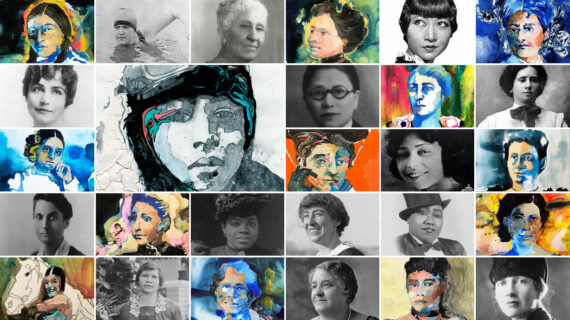
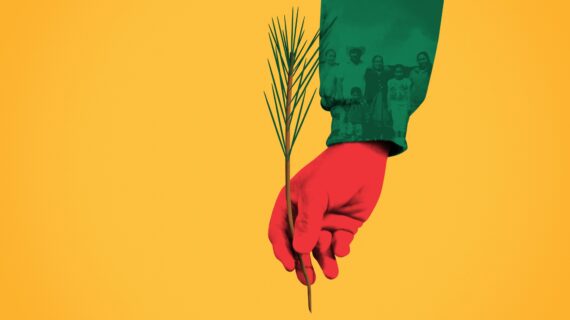
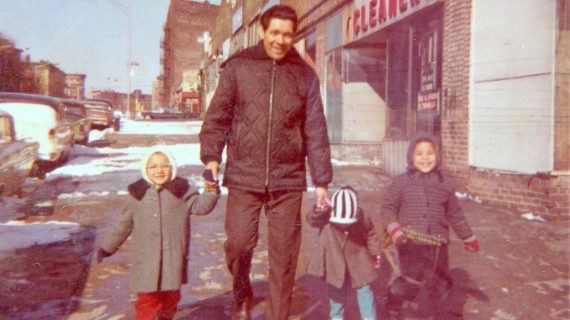
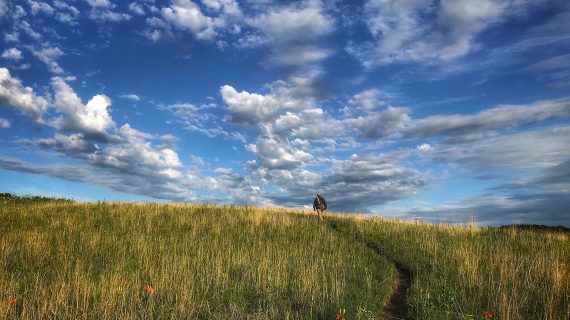
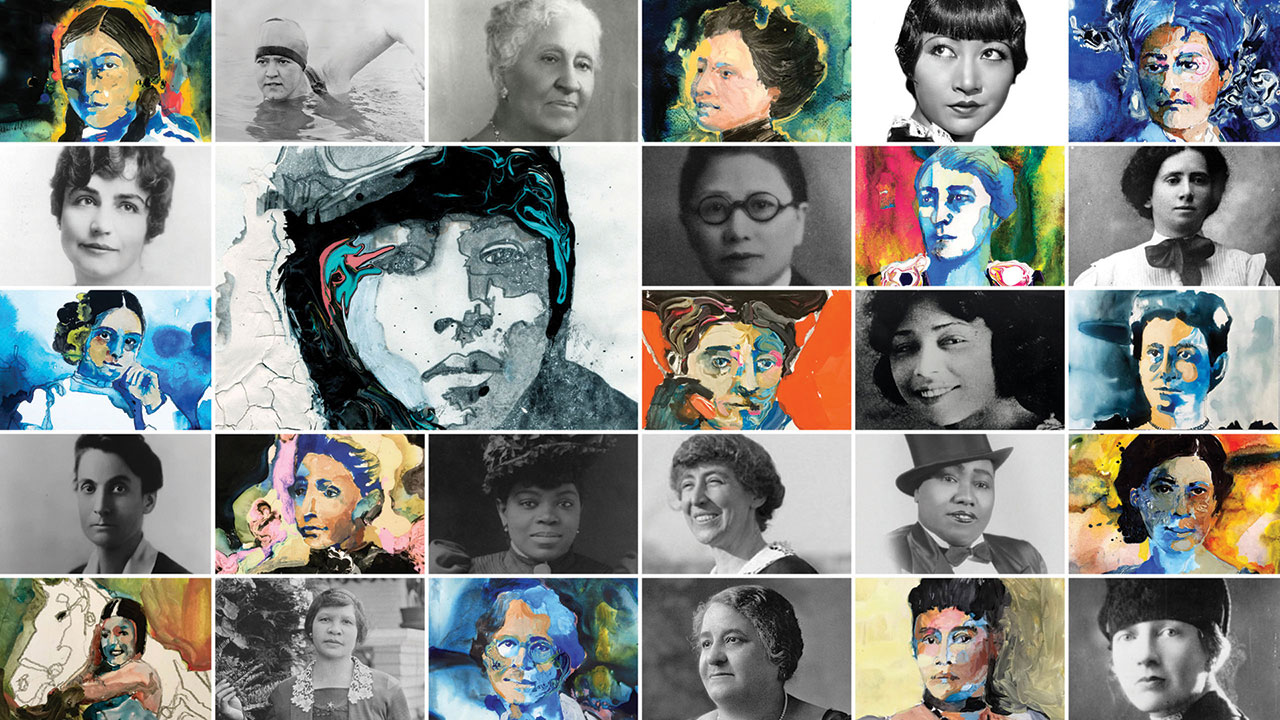
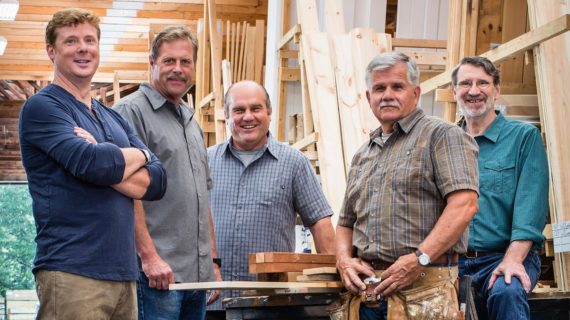

Follow Us